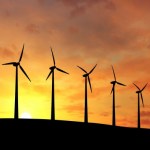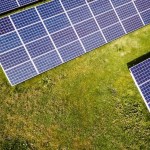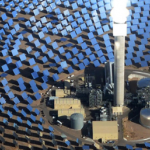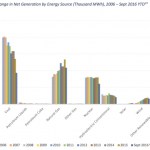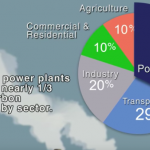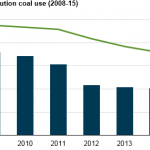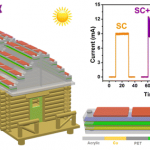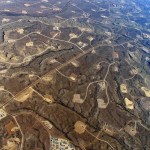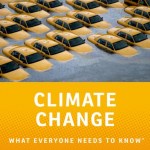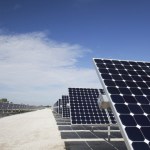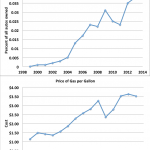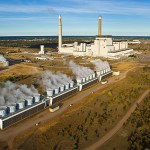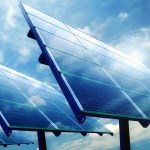Clean Energy
Puerto Rico can become the first significant size polity to rebuild itself from the ground up to be totally Carbon free. Or at least, that seems like a good idea. If only the US Government wasn't so anti-Puerto Rico, owing to the president being, well, Trump.
Anyway, there is now a pile of money and effort pouring int Puerto Rico and this can be used in part to give Puerto Rico sigificantly more economic and energy security in its future, if only energy-smart decisions are made now. So let's see what Get Energy Smart Now blog has to say about this!
Puerto Rico’s electricity system, prior to…
Sorry for the inconvenience, this post has been moved HERE.
True that. In the US, energy policy and regulation happens much more at the state level than the federal level, and our federal government went belly up last January anyway. Some states will not lead, they will go backwards, but others will lead, and show the way.
So, here I want to highlight this new item in Scientific American by Rebecca Otto.
States Can Lead the Way on Climate Change
The Trump administration's threats to abandon Obama's Clean Power Plan and exit the Paris accords don't necessarily mean all is lost
The word “corporation” does not appear in our Constitution or Bill of…
Earlier today, Minnesota Gubernatorial candidate Rebecca Otto released her energy transition plan. It an ambitious plan that puts together several elements widely considered necessary to make any such plan work, then puts them on steroids to make it work faster. To my knowledge, this is the first major plan to be proposed since the recent dual revelations that a) the world is going to have to act faster than we had previously assumed* and b) the US Federal government will not be helping.
Here's the elevator speech version: Minnesota residents get around five thousand dollars cash (over…
SolarReserve will build, for the South Australia government, a solar thermal plant rated at 150 MW, which is about 25 MW more than that government uses currently. Over time, assuming Australia goes all on clean and green, the amount of electricity used by South Australia will increase substantially, but for now, this plant will provide the extra to the regional grid.
A solar plant is a way of making the use of solar more full time. Instead of just producing electricity by sunlight, perhaps storing some in batteries, it uses sunlight to produce heat, which is then used to run a turbine all…
ADDED, ANOTHER CHEAP BOOK YOU MIGHT WANT:Dune
The following random thought will eventually become a more carefully written blog post, but I want to get this out there sooner than later.
Mention electric cars, or solar panels, or any other kind of thing a person might buy and deploy to reduce their Carbon footprint.
Mention that to enough people and some wise ass will eventually come along and tell you how wrong you are. About how electric cars are worse for the environment than gas cars because bla bla bla, or how solar panels are worse for the environment than burning natural gas because of…
The solar energy field now produces the larest share of jobs in US Power generation. There are 374,000 jobs i Solar right now, compared to fewer than 190,00 in coal, gas, and oil.
This corresponds to shifts in the amount of electricity produced by these various sources, as indicated in the Department of Energy graph shown above.
The biggest states for this job growth are California followed distantly by Massachusetts, Nevada, New York, New Jersey, Texas, Arizona, Florida, and North Carolina.
Given current trends inside the beltway, I expect the Department of Energy to make this report…
The US is already behind in its agreed to commitment to clean power
A study just out in Nature climate Change suggests that the US is already behind in its commitments to reduce the use of fossil fuel as an energy source, and the concomitant release of climate-warming greenhouse gasses into the atmosphere.
The paper, by Jeffery Greenblatt and Max Wei, says:
Current intended nationally determined contributions (INDCs)are insufficient to meet the Paris Agreement goal of limiting temperature change to between 1.5 and 2.0◦C above pre-industrial levels, so the effectiveness of existing INDCs will…
A lot of higher education institutions are old, and back in the day, things were different. Not only were most schools simultaneously on top of and on the bottom of great snow covered hills, but they were often surrounded by nearly medieval settlement, or at least, pre-industrial ones, that lacked things like central heat, electricity, and so on, even after these things became common and normal.
I remember the legacy of this reality at my Alma Mater, a small university in Cambridge, Mass. Most of the campus had its own heating system, which was built at a time when centrally distributed…
Barack Obama, Justin Trudeau and Enrique Peña Nieto, have made a joint announcement. As reported by NPR:
President Obama and his counterparts from Canada and Mexico are preparing to unveil an ambitious new goal for generating carbon-free power when they meet this week in Ottawa.
The three leaders are expected to set a target for North America to get 50 percent of its electricity from nonpolluting sources by 2025. That's up from about 37 percent last year.
Aides acknowledge that's a "stretch goal," requiring commitments over and above what the three countries agreed to as part of the Paris…
There is a new technology that can convert both solar and wind energy into electricity in such a way that it is suitable for use on urban rooftops.
Here's the abstract from the paper describing this work:
To realize the sustainable energy supply in a smart city, it is essential to maximize energy scavenging from the city environments for achieving the self-powered functions of some intelligent devices and sensors. Although the solar energy can be well harvested by using existing technologies, the large amounts of wasted wind energy in the city cannot be effectively utilized since…
Research makes it increasingly clear that along with drilling for oil and mining coal, extracting natural gas from deep underground causes serious damage to the environment and to public health. On The Pump Handle, Kim Krisberg examines the contamination that may result from dumping fracking wastewater into disposal wells, writing "about 1,000 different chemicals are used in the fracking industry, with more than 100 being known or suspected endocrine disruptors." Researchers collected water samples downstream from wells in West Virginia, and after "exposing both female and male mammalian sex…
Michael Mann has an editorial on Scientific American's site putting the well known 2.0C limit in perspective for the upcoming climate talks in Paris.
Mann makes a number of important points in his essay (read it here: Meeting a Global Carbon Limit Is Cheaper Than Avoiding One) but there is one point that I want to underscore.
The key factor is that there are technological innovations and economies of scale that emerge only in the course of actually doing something.
Here's the thing. Let's say you were suddenly in charge of one trillion dollars of money that could be used to address climate…
Climate Change: What Everyone Needs to Know® by Joe Romm is just out, and is the most up to date examination of climate change science, the effects of climate change on humans, policy related problems, and energy-related solutions. Everyone should read this book, and if you teach earth system sciences you should consider using this book as a guide in your teaching, or in some cases, assigning it in class. The book is written to be read by general audiences, so it would work well in a high school or college setting.
As Romm points out, climate change will have more of an impact on humans,…
One of the problems we have in making a quick transition to clean energy in the US is the fact that energy production and distribution is typically regulated by states, and some states are not as smart as other states. Or, if they are smart, they are controlled by political forces intent on maintaining fossil carbon based fuels as our primary energy source, which of course, is a totally bone-headed policy.
When it comes to the transition to clean energy, we can do this the easy way, or we can do this the hard way. The easy way is to encourage the picking of low hanging fruit, such as solar…
Last summer we were driving up north, in our Prius, and one of those coal rollers tailgated us for a while, then passed us. On the right. On the median. Jerk.
When we were trying to decide whether or not to buy a Prius, last winter, I looked into the usual things one looks into. I learned from the internet and various people that we'd never recover the extra cost of buying a Prius, because they were so expensive. So I got a little information together and called a dealer.
"I'm thinking of buying either a Subaru Forester to replace our old and beat up Forester, or a Prius. But I've been…
I want to put a solar panel on my roof so that I am releasing less greenhouse gas into the environment. But then I hear that manufacturing solar panels causes the release of greenhouse gasses, so I have to subtract that from the good I think I'm doing. But then I realize that the people who are making the solar panels have to change their method so they release less greenhouse gas into the environment.
We hear this argument all the time (for example, here). You think you are doing something "green" but it really isn't green because yadayadayada. I am suspicious of these arguments because…
Governor Mark Dayton has called for the elimination of coal as a source of energy in Minnesota. Doing so is, clearly, essential. Having a governor call for it is a new thing; we are only seeing this sort of policy being developed recently.
From MPR News, Dayton said to a group of energy policy ad business leaders:
"Tell us what a timeline would look like, what has to happen for that timeline to be met and what kind of incentives or inducements do we need to provide to make that happen," ...
Dayton's comments came during the state's first-ever Clean Energy Economy Summit. He said…
Every one of these is a topic I'd like to write an entire blog post about but I don't have time right now. So, YOU write the blog post!
In Michigan there is an emerging debate and discussion about using the Vast Forests in that state to provide energy. This is a good idea because it does not involve the release of fossil Carbon from fossil fuels. It is a bad idea because it involves the release of Carbon currently trapped in a medium term and important Carbon sink. It is interesting because it highlights a key feature of the whole energy and climate change thing. Sun makes burnable stuff…
Investment in and development of clean energy seems to be undergoing a transition, and this is reflected in a number of items that came across my desk this morning. Without attempting any serious analysis, here's a brief summary.
Clean Energy investments have fallen over the last couple of years, leading some to assert that the transition to non fossil sources of energy is in trouble. But there is an excellent argument that the exact opposite is true. What has really happened is that the cost of implementing new clean energy projects has dropped dramatically, so the cost of investment has…

